Thymidine rescues ATR kinase inhibitor-induced deoxyuridine contamination in genomic DNA, cell death, and interferon-α/β expression
- PMID: 36130512
- PMCID: PMC9646445
- DOI: 10.1016/j.celrep.2022.111371
Thymidine rescues ATR kinase inhibitor-induced deoxyuridine contamination in genomic DNA, cell death, and interferon-α/β expression
Abstract
ATR kinase is a central regulator of the DNA damage response (DDR) and cell cycle checkpoints. ATR kinase inhibitors (ATRi's) combine with radiation to generate CD8+ T cell-dependent responses in mouse models of cancer. We show that ATRi's induce cyclin-dependent kinase 1 (CDK1)-dependent origin firing across active replicons in CD8+ T cells activated ex vivo while simultaneously decreasing the activity of rate-limiting enzymes for nucleotide biosynthesis. These pleiotropic effects of ATRi induce deoxyuridine (dU) contamination in genomic DNA, R loops, RNA-DNA polymerase collisions, and interferon-α/β (IFN-α/β). Remarkably, thymidine rescues ATRi-induced dU contamination and partially rescues death and IFN-α/β expression in proliferating CD8+ T cells. Thymidine also partially rescues ATRi-induced cancer cell death. We propose that ATRi-induced dU contamination contributes to dose-limiting leukocytopenia and inflammation in the clinic and CD8+ T cell-dependent anti-tumor responses in mouse models. We conclude that ATR is essential to limit dU contamination in genomic DNA and IFN-α/β expression.
Keywords: ATR/origin firing/deoxyuridine contamination/IFN-α/β; CP: Cancer; CP: Immunology.
Copyright © 2022 The Author(s). Published by Elsevier Inc. All rights reserved.
Conflict of interest statement
Declarations of interests The authors declare no competing interests.
Figures
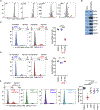

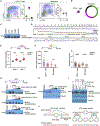
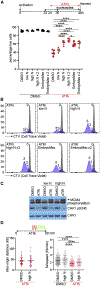

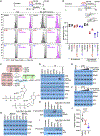
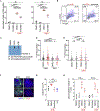
References
-
- Beyaert M, Starczewska E, Pérez ACG, Vanlangendonck N, Saussoy P, Tilman G, De Leener A, Vekemans MC, Van Den Neste E, and Bontemps F (2017). Reevaluation of ATR signaling in primary resting chronic lymphocytic leukemia cells: evidence for pro-survival or pro-apoptotic function. Oncotarget 8, 56906–56920. 10.18632/oncotarget.18144. - DOI - PMC - PubMed
-
- Bjursell G, and Reichard P (1973). Effects of thymidine on deoxyribonucleoside triphosphate pools and deoxyribonucleic acid synthesis in Chinese hamster ovary cells. J. Biol. Chem 248, 3904–3909. - PubMed
Publication types
MeSH terms
Substances
Grants and funding
LinkOut - more resources
Full Text Sources
Molecular Biology Databases
Research Materials
Miscellaneous

